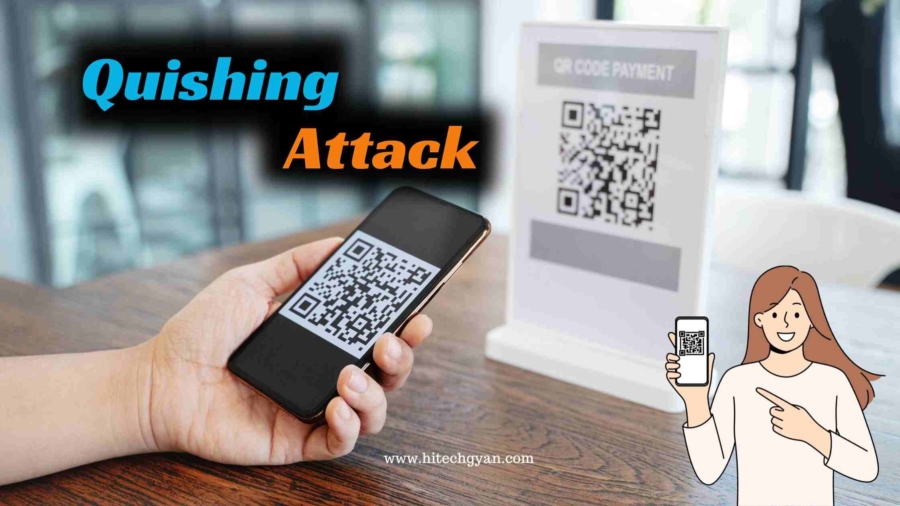You might have heard of the word quishing, In our increasingly digital world, where convenience is a top priority, we often overlook the potential dangers that come with new technology. One such threat is called “quishing,” a term that combines “QR code” and “phishing.” In this blog post, we will dive down into the world of quishing, exploring what it is, how it works, and what steps we can take to protect ourselves. So let’s dive in!
What is quishing?
Quishing is a short form of “QR code phishing.” Quishing is a scam that uses QR codes to fool you. QR codes are those black and white squares that you scan with your phone. Some bad people send fake emails with QR codes that lead to harmful websites or apps. They want to steal your data or damage your device. Don’t scan QR codes that you don’t know or trust. Be careful and smart online. Now let’s know in detail how it works.

How does quishing work?
1. Fake QR codes
- Cybercriminals create and display fake QR codes that look like real ones.
- These fake codes are strategically placed on physical objects or electronic mediums to lure unsuspecting victims.
- When scanned, these QR codes lead users to phishing websites or initiate malware downloads.
2. Redirecting to malicious websites
- Quishing also involves redirecting users to malicious websites.
- Once the QR code is scanned, it may take users to a seemingly harmless website.
- However, behind the scenes, the website collects sensitive information or infects the user’s device with malware.
3. Social engineering tactics
- Quishing often employs social engineering tactics to manipulate users.
- Cybercriminals may create enticing offers or urgent requests to entice users into scanning the QR code without thinking twice.
- These tactics can include promises of freebies, exclusive deals, or even warnings about account security.
Examples of quishing attacks
1. Fake Wi-Fi networks
- Imagine you are sitting at your favorite coffee shop, and a QR code catches your eye, promising free Wi-Fi access.
- You scan it, thinking it’s a convenient way to connect. However, the QR code leads you to a fake network created by cybercriminals, who can now intercept your online activities and potentially steal your personal information.
2. Contaminated event promotions
- Let’s say you come across a QR code while attending a conference or a concert.
- Thinking it’s an event promotion, you scan the code and unknowingly download malware onto your device, granting unauthorized access to sensitive data such as your contacts, emails, or even financial information.
Protecting against quishing
1. Stay cautious and vigilant
- Always approach QR codes with caution, especially if they are displayed in public places or sent by unknown sources.
- Look for any unusual or suspicious elements such as misspellings, distorted images, or strange URLs before scanning.
2. Verify the source
- Before scanning a QR code, verify its source by checking if it comes from a trusted and reputable entity.
- When in doubt, use your smartphone’s camera app to scan the QR code instead of third-party apps that might not have built-in security measures.
3. Enable anti-malware protection
- Installing a reliable anti-malware app on your smartphone can help detect and block any potential threats from malicious QR codes.
4. Never enter sensitive information
- Be cautious of QR codes that require you to enter sensitive information, such as passwords or bank account details.
- Legitimate organizations would never ask you to provide such information through a QR code.
5. Report suspicious codes or activities
- If you come across a suspicious QR code or notice any fraudulent activities, report them to the appropriate authorities or the platform that displays the code.
Conclusion
Quishing is a growing threat that exploits our trust in QR codes, using them as a gateway for phishing attacks and malware distribution. However, by staying vigilant, verifying the source, and following security best practices, we can protect ourselves from falling prey to such deceptive schemes. Remember, the convenience of technology should never come at the cost of our security. Stay safe, and think twice before you scan!
“Stay vigilant and think twice before scanning QR codes. Your security matters.”
